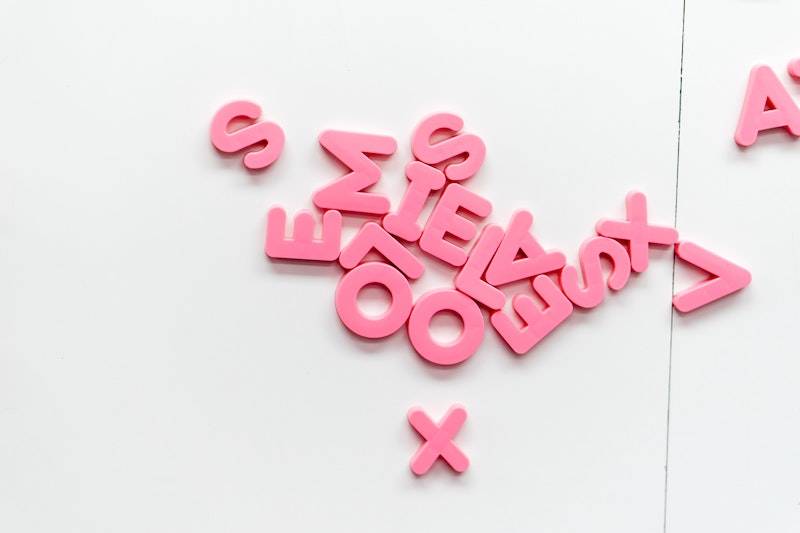In contrast to their Romance language siblings like Italian and Spanish, French words are rarely fully phonetic (i.e., hard to simply “sound out” correctly) and require you to keep your mouth closed much more often than wide open. To English speakers, French feels very subtle; there are many small movements required at the front of the lips and back of the throat that can leave us feeling a bit tongue-tied.
It is often said that to pronounce a French word, you can simply leave off the last few letters (but which few?!). While it’s true that French words are often much longer in their written form than their spoken form, there are many exceptions. Luckily, once you pick up on a few key pronunciation rules regarding how letters behave next to other specific letters, French sentences will begin to flow much more easily.
Do you want to learn how to do a French accent like a native speaker? This French pronunciation guide will help. Read on!
One letter, one sound, right? Not exactly.
How many sounds exist in the English language? One for each letter, right?
What sound does “A” make? Your first response may be the “ahh” sound that you make when you’re afraid of something, like the beginning of “apple.” However, this is only one of the several phonemes (individual sounds) associated with the letter “A.” Think about how the letter “A” behaves in these two words:
alligator (ah-llig-ay-tor) accommodate (uh-commod-ay-te)
As the standardized written versions of languages are fairly recent, many now standard spellings were adopted haphazardly (many around when the printing press started gaining popularity) as interpretations of sounds. To top it off, language changes naturally over time, which means the pronunciation can start to diverge from the written form. The important thing to remember is that one sound (phoneme) is not inextricably tied to one letter. In fact, the same sound may even be elicited by a combination of different letters, like the single sound “ee” in the words “freed” and “lead.”

While English is notoriously difficult in this area, French also has multiple phonemes associated with the same letter. English uses the same 26-letter Latin alphabet as French, but has 44 distinct phonemes associated with those letters, while French only has 36. Within that 36, there are six vowel sounds and four consonants not found in English, meaning there are a total of 10 new sounds to learn.
In some cases, a borrowed French word is still pronounced like French in English. For example, when using “corps” (meaning “body” in French) to refer to military groups such as the “Marine Corps,” it’s just pronounced like the word “core,” so you can remember that the “ps” is silent.
This lack of pronunciation at the end of the word is true of many French words. For English speakers, the “s” on the end of plural words is especially tempting to pronounce. Another borrowed term that will help you remember not to pronounce that final “s” is “faux pas.”
Similarly, if you’re trying to remember what sound the accented “é” at the end of the word makes, remember the light upswing at the end of words like “cliché” and “fiancé.”
While this makes for a nightmare for English learners, it may actually help you remember how to pronounce French words correctly! Loanwords from other languages also make their way into French. The letters “K” and “W” are mainly only used for loanwords, which means you won’t see them as often in core French vocabulary.
Vowels
Because French has six vowel sounds not found in English, pronouncing these sounds is notoriously tricky. For some, an accent lets you know which vowel sound is required.
| Vowel | Pronunciation Tips | French Example | |
|---|---|---|---|
| a | like “ah” in English | la (the) | |
| à | like “ah” | là (there) | |
| â | like “ah” but longer | âne (donkey) | |
| e | When placed in the middle of a syllable, sounds like ai in “fair” | mer (sea) | |
| e | When placed at the end of a syllable, sounds like -e- in “her” | le (the) | |
| e | silent at the end of a word | tasse (cup) | |
| é | like “ay” | été (summer) | |
| è | like -ai- in “fair” | père (father) | |
| ê | like -ai- in “fair” | tête (head) | |
| i, y | like -ee- in “meet” | ski (skiing) | |
| o | like -o- in “not” | poste (post office) | |
| ô | like “oh” | hôtel (hotel) | |
| u | This sound does not exist in English. Say “ee” then make an O shape with your lips | vu (seen) | |
| oi | like “wah” | roi (king) | |
| ou | like “oo” | roue (wheel) | |
| ai, ei | like -e- in “let” | laine (wool) | |
| au, eau | like “oh” | au (to the) | |
| eu, oeu | like -er- in “her” | neuf (nine) |
Don’t be disheartened if you can’t distinguish between è and é at first: it takes time to train your ear to the difference. As we mentioned before, the core sound associated with these accented letters can also occur with other combinations of letters. For example, the é equivalent sound in English is like the -ay in “lay” or “may,” and can be found in all of the following words:
| écharpe (scarf) | |
| montrer (to show) | |
| vous montrez (you all show) | |
| pied (foot) |
Hint: This is always the final sound for -er verbs in the infinitive and conjugated verbs ending in -ez (vous forms).

Be Nosy with Nasal Sounds
In English, we mainly have oral vowels, which means the sound comes from our mouth. Nasal vowels are so named because the sound and air escape from the nasal passage instead of the mouth. In many cases the mouth is still open, but speakers control the flow of air by blocking it from escaping the mouth. Three of the six vowel sounds not present in English are nasal sounds.
To get your nasal areas warmed up, hum the letter “M” out loud and notice the vibrations in your nose. Now, try opening your mouth and humming “M” and then “N.” Put your hand in front of your mouth and notice that no air is escaping. It should feel similar to the -ng in “song.”
Now, try to force the vowel sounds in the table below up and out in the same way while continuing to vibrate your vocal cords.
| Nasal sound | Pronunciation Tips | French Example |
|---|---|---|
| om, on | like -on- in “song” | nom (name) |
| non (no) | ||
| un | like -un- in “sung” | un (one) |
| brun (brown) | ||
| am, an, em, en | like “ahn” | champ (field) |
| an (year) | ||
| temps (time) | ||
| en (in) | ||
| im, in, aim, ain, ein | like -un- in “sung” | simple (easy) |
| vin (wine) | ||
| faim (hunger) | ||
| bain (bath) | ||
| plein (full) | ||
| ien | like “ee-un” | bien (well) |

Silent Sounds
Knowing which sounds to leave off at the end of the word is one of the trickiest parts of learning French. Although it may seem random, there are a few tricks to recognize the method to the madness.
CaReFuL Consonants:
For words that end in the consonants found in the word “careful” and are not an infinitive -er verb, you need to pronounce the final sound:
| truc (thing) | |
| comptoir (counter) | |
| relief | |
| verbal |
Although these don’t have a cute mnemonic device, the same rule applies for for how to pronounce French words ending in “B,” “K,” (which are all mostly loan words) and “Q.”
Here are a few general pronunciation guidelines for linking a word that ends in a consonant with a word that begins with a vowel to get you started:
| web (internet) | |
| beefsteak | |
| cinq (five) |
Otherwise, if it ends in a consonant, you usually just pronounce the final vowel sound and leave off the harsh ending.
| coup = “coo” (blow, hit) | |
| bois = “bwah” (wood) |
Feminine and Pluralization
Often, when making a word feminine, you add an -e, which means that it no longer ends in a consonant and is therefore pronounced.
| “N” not pronounced: Il est américain (He is American) | |
| “N” pronounced: Elle est américaine (She is American) |
However, when making a word feminine and plural, the -s is not pronounced, but it retains its pronounced final sound (-n- in this case).
| “N” not pronounced: Ils sont américains (They (masc. group) are American) | |
| “N” pronounced: Elles sont américaines (They (fem. group) are American) |
Liaison
Within an utterance, no sound occurs in isolation! The company a letter keeps (the letters on either side within the word and the next word in the phrase) determines how it’s pronounced. In French, there is a phenomenon emblematic of this called “liaison,” in which certain sounds at the beginning and end of two words “liaise” to make the transition between words more fluid by eliminating the pause in between. This helps give French its melodic flow by avoiding some awkward stops and starts.
Often, this means pronouncing consonant sounds that would otherwise be kept silent when the next word begins with a vowel. While there are many exceptions and fine-grained rules to liaison, with lots of listening practice certain combinations will just start to sound right. Try listening to podcasts or a French radio station while you cook or do chores around the house to help train your ear!
Here are a few general guidelines for linking a word that ends in a consonant with a word that begins with a vowel to get you started:
Words that end in “D” sound like “T.”
| Quand est-ce qu’on arrive ? (When will we get there?) | liaison pronunciation: kanh-tesk |
Words that end in “N” and “P” are pronounced.
| On a tout compris. (We understood everything.) | liaison pronunciation: ona |
Words that end in “S” and “X” sound like “Z.”
| Je voudrais deux affiches. (I would like two posters.) | liaison pronunciation: de-zah-feesh |

How to pronounce the French “R”
The guttural “R” used in French doesn’t have an English counterpart, so if you want to learn how to do a French accent convincingly, forget everything you think you know about the sound associated with “R.” The French “R” is a sound made in the back of the throat. In some cases it’s rather harsh and in others it’s softer, depending on the word and region of France. The feeling is similar to gargling mouthwash, clearing your throat, or coughing up some…stuff…when you’re sick – apologies for the comparison! Once you’ve located the guttural throat feel, try pronouncing a “K” but with your throat closed. It almost feels similar to pronouncing an “H” in English.
Listen to the following words to get an idea of how to pronounce the French “R”:
| frère (brother) | |
| sucre (sugar) | |
| vraiment (really) | |
| regarder (to watch) |
Mouth-Muscle Memory
Of course, the most important “rule” to follow to improve how you pronounce French words is building French speaking practice into your daily routine. Pronouncing new sounds and using new intonations requires the training of not only your mind, but your mouth! Just like learning to score a goal, juggle, play guitar, or any other physical activity, speaking a new language fluently requires established muscle memory.
Carefully studying this French pronunciation guide is a great starting point. But the only way you will get better at speaking French is – you guessed it – speaking French regularly. Try signing up for an online or mobile course with speech recognition, like Lingvist’s French course, and using the notifications and reminders to help build at least a few minutes of pronunciation practice into your daily routine.


